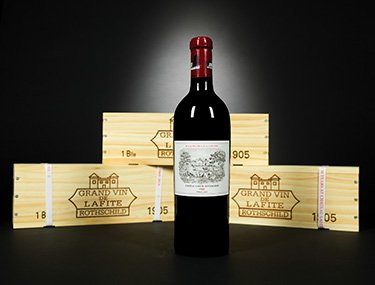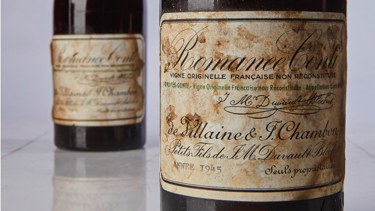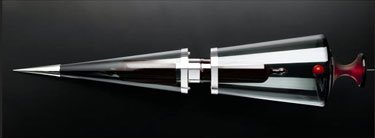Category Archive 'Wine'
20 Sep 2021


World Spectator excerpt #2.
There must be a lot more money in being a prolifically published conservative defender of civilization than I ever realized, since Roger Kimball so clearly consistently drinks a lot higher off the vine than I customarily do.
I commonly get by on Two-Buck-Chuck Shiraz and undistinguished, simple and hearty reds from Spain and Portugal. Meanwhile, Old Roger is evidently routinely quaffing $30 and $50 French Clarets and thinks it worth forking out $120-130 for some 2015 California Cabernet. Harummph!
Roger apparently even, from time to time, gets in on vertical tastings of First Growths which, I must concede, move him to genuine eloquence.
[W]ine is susceptible to other liabilities as well. One is the same liability that, sooner or later, affects us all: age. Wines, like people, have different life spans depending on a number of factors, some intrinsic — the sort of grapes it is made from — some extrinsic — how it has been stored, for example. Most wines, like most people, lose suppleness, vivacity and lusciousness after a certain point. This is generally a gradual process, however, and some wines that are clearly on the way out are still interesting.
Indeed, it is often possible to discern lingering greatness in a wine that is past its prime. Some colleagues and I were once treated to a vertical tasting of Château Lafite Rothschild beginning with a bottle of 1961, a storied vintage of a great wine. I have heard that some bottles of 1961 Bordeaux are still drinking well, but this bottle had had a hard life. You could still discern, just, its nobility, but it was present in outline only, a ghost, something like Achilles encountered by Odysseus in the underworld.
It must be nice!
RTWT
22 Mar 2019


Elin McCoy, of Bloomberg, reports on her six-course dinner with lots of vintages tasted at Chateau Lafte-Rothschild.
The intimacy of the evening was reflected in the cuisine familiale menu. We took our seats and soupe VGE arrived—individual tureens filled with delicate broth, winter vegetable, and truffles covered in puff pastry—the first of six courses. To accompany it, Eric picked an intense, truffle-scented 2005 Château L’Evangile from the Rothschilds’ Pomerol estate. Also poured was a smooth, seductive, and rich 1989 Château Duhart-Milon, the neighboring fourth growth that the family purchased in 1962; it was astonishing how well it aged. If anything at the upcoming auction could be considered a bargain, this is it, with an estimate of $1,000 to $1,500 for a case of 12 bottles.
The main course was a simple boeuf a la ficelle—beef filet with a tangy, minty green sauce, surrounded by tender leeks, scallions, carrots, and turnips—and with it, Lafites from both 1989 (estimate: $4,000 to $6,000 for 6 bottles) and 1959 (estimate: $3,000 to $4,600 for one bottle). The former was gulp-able and voluptuous, with layers of spice, cassis, and cedar. And the latter? Deep-colored and concentrated, with notes of mint, cedar, truffle, and tobacco, the 1959 is the greatest Lafite I have ever drunk; the epitome of harmony and velvety elegance. This is its moment, but it seems like it could live on this plateau for decades. Wais Jalali, the CEO and Chairman of private equity firm Cerebrus LLC and whose cellar includes 48,000 bottles, declared it “the wine of the night.â€
Cheese appeared, and with it came the biggest surprise of the evening: the delicate 1905 Lafite (estimate: $3,000 to $4,800 for one bottle). At 114 years, it showed the kind of longevity Lafite is known for, demonstrating why perfect storage conditions are so important when buying old wines. With its silky texture, ethereal scents of plums and currants, and a long finish, it suggested to me a long-ago world.
The meal ended with a creamy lemon mousse, paired with an apricot-scented, opulent 1989 Château Rieussec, which unfortunately will not be available at the upcoming auction.
Afterward, we settled into the small, cozy, adjoining salon, where several guests puffed on Cuban cigars and we sipped an old Mirabelle and Lafite’s private label of Tres Vieille Reserve Cognac. I reflected on the pleasure of decades-old wines.
“Every wine has its moment, but you have to choose the right moment,†the baron had explained on the cellar tour. Each of the wines poured demonstrated that perfectly. Most of these vintages are available in the upcoming auction, but only the single bottle of 1868 (estimate: $13,000 to $20,000) includes dinner at the château. I’d happily pay that much for dinner alone.
RTWT
It’s a rough life being a wine journalist, but Elin is clearly bearing up bravely.
HT: Bird Dog.
15 Oct 2018


Quartzy:
As Europe nursed its wounds right after the Second World War’s end in 1945, top Burgundy producer Romanee-Conti made just 600 bottles of dark red nectar before pulling up its vines for replanting.
Yesterday (Oct. 13), two of those 600 were sold in separate auction bids for a total of just over $1 million at Sothebys in New York. Three more bottles from the 1937 vintage went for a total of $930,000.
All five bottles beat the previous record for most expensive bottle of wine of any size, a $304,375 six-liter bottle of Cheval-Blanc 1947, sold in Geneva in 2010. (The records don’t include bottles auctioned for charity.) The two 1945 bottles also eclipsed the previous record for a standard-sized wine bottle—$233,000 at a Hong Kong auction in 2010.
The highest bid was for the first bottle from 1945, which went for $558,000. That’s 17 times more expensive than Sothebys’ upper estimate of $32,000. A few minutes later, the second bottle of 1945 sold for $496,000. Three magnums of the 1937 were then sold for $310,000 each, having been given an upper estimate of $40,000.
The total collection, from the personal cellar of wine producer Robert Drouhin, sold for $7.3 million. Nine of its 100 bottles went for six-figure sums.
The 1945 vintage is “rare and wonderful,†Serena Sutcliffe, head of Sothebys international wine department, wrote in the lot notes. “The best bottles are so concentrated and exotic, with seemingly everlasting power—a wine at peace with itself.â€
RTWT
07 Mar 2018


Looks a trifle oxidized to me.
Atlas Obscura:
For the last hundred years, Germany’s Historical Museum of the Palatinate has housed the world’s oldest unopened bottle of wine. But a century is nothing to the Speyer wine bottle, also known as the Römerwein aus Speyer. Its murky contents have sat undisturbed inside clear glass for 1,693 years.
The 1.5 liter bottle has handles shaped like dolphins and was buried in the tomb of a Roman nobleman and noblewoman near today’s city of Speyer. Researchers estimate that it dates to around 325 C.E. When the tomb was excavated in 1867, other wine bottles were found, long since shattered or empty. In earlier eras, Romans cremated the dead. But by the time of the Speyer bottle, Romans laid corpses to rest in sarcophagi with grave goods, which included everyday items, including wine.
The wine inside the Speyer bottle was likely made from local grapes that were planted during Roman rule. Unknown herbs were added as well, perhaps as flavoring or as a preservative. The residue inside, however, is no longer truly wine. Instead, it consists of a solid, dark mass and a milky liquid. Even the survival of that residue is unprecedented. An unusually well-made bottle that stayed airtight over the millennia, a wax seal, and a thick layer of olive oil preserved its contents from totally evaporating. In fact, more oil than wine was poured into the bottle, creating the dense, solid layer visible through the glass.
RTWT
01 Apr 2016

An amusing (and informative) take-off on the Periodic Table of the Elements from Kuriositas, $17.00 at Amazon.
01 Jan 2015


On the occasion of this particularly convivial time of year, The Dish shared the late Christopher Hitchens’ account of his own tippling habits, straight out of his memoir, Hitch-22.
———————–
Hitchens had even more to say about drink here:
I’ll be 54 in April, and everyone keeps asking how I do it. How do I do what? I’m never completely sure what the questioner means. I *hope* they mean how do I manage to keep producing books, writing essays, making radio and television appearances at all hours, traveling all over the place with no sign of exhaustion, teaching classes, and giving lectures, while still retaining my own hair and teeth and a near-godlike physique which is the envy of many of my juniors. Sometimes, though, I suppose they mean how do I do all this and still drink enough every day to kill or stun the average mule? My doctor confesses himself amazed at my haleness (and I never lie to a medical man), but then, in my time I’ve met more old drunks than old doctors.
What with the garlic, the full strength cigarettes, the raw espresso, and the array of winking and shimmering glasses and bottles, I can face the world pretty heartily (despite a slight heftiness around the central portions which i keep meaning to “address,†as the saying goes, and despite a long-standing preference for nocturnal activity over encounters with “morning persons.†I will admit that I am a standout in Washington for non-attendance at power breakfasts). In Europe, I don’t seem to attract as much attention, or as many questions. Indeed, it was the so-called French paradox that started the inquiry into the medicinal effects of alcohol in the first place. American physicians, taking their cautious tours of Paris and Strasbourg in the spring or perhaps having arranged to have their tax-deductible proctologists’ conventions in Provence, went to restaurants where they predicted from observation that all the diners would be dead or dying within a year. Then they went back — perhaps after attending a few boring funerals for their own miserable colleagues — and saw the selfsame French still browsing and sluicing away and looking more joyously fit than ever.
Well, that surely couldn’t be right. But an unsmiling look at the statistics confirmed that there was less heart disease in France, and meticulous scientific investigation then isolated red-wine consumption as the key variable. So let me tell you something that I could have told you long ago, and that your doctor already knew but hadn’t been telling you. Red wine will elevate your “good -cholesterol numbers (H.D.L.) as against your “bad†(L.D.L.) ones, and it will then and inspire your blood so that it is much less likely to go all clotted on you. A few drinks also assist you in warding off diabetes. And not just red wine, either. pretty much any grape or grain product will do. In Woody Allen’s 1973 movie, Sleeper, he plays an owner of a health-food restaurant in Greenwich village who is cryogenically frozen, and then thawed out in the year 2173. Among the many breakthroughs made by science in the intervening two centuries is the liberating discovery that steak, cream pies, and hot fudge are positively good for the system. The New England Journal of Medicine for January 2003 contains news much more encouraging than that. After all, nobody wants cream pie and hot fudge every day (do they?). And even if they did turn out to be beneficial for the health, they wouldn’t make you wittier, sexier, more vivacious, and less tolerant of boring and censorious people. Which the the daily intake of the fruit of the vine — to say nothing of the slowly distilled and matured grain — will also do, if you know how to make it your servant and not your master.
A few swift tips here, to show that I am perfectly serious. On the whole, observe the same rule about gin martinis — and all gin drinks — that you would in judging female breasts: one is far too few, and three is one two many. Do try to eat the olives: they can be nutritious. Try to eat something, indeed, at every meal. Take lots of fresh or distilled water. Don’t mix from different bottles of red wine: Dance with the one that brung ya. Avoid most white wine for its appalling acidity and banality. (Few things make me laugh louder than the ostentatious non-drinkers who get plastered when they condescend to imbibe a glass of toxic Chardonnay, and who have been fooling themselves for so long.) Avoid Pernod and absinthe and ouzo. Even if it makes you look like a brand snob, do specify a label when ordering spirits in particular. I once researched this for a solemn article and found that if you just ask for, say, vodka-and-tonic the barman is entitled to give you whatever he has on hand, which is often a two-handled jug labeled “Vodka†under the bar. It can be even worse with scotch, where imitation blends are rife. Pick a decent product and stay with it. Upgrade yourself, for Chrissake. Do you think you are going to live forever?
25 Jan 2013
The explanation is in French, but that doesn’t really matter.
Hat tip to Elizabeth Scalia.
01 Jul 2012


2004 Penfolds Block 42 Cabernet Sauvignon in its “special ampoule”
For the serious highroller unaffected by the recession, the Australian winemaker Penfolds has an unusual special offering.
CNBC:
The most expensive wine ever sold directly from a winery will go on sale this week, from the venerable Australian vintner Penfolds. The limited edition release of the 2004 Penfolds Block 42 Cabernet Sauvignon is priced at $168,000 a bottle.
The wine’s distinctive price comes from its rarity. The wine was made from the oldest producing cabernet sauvignon vines in the world, transplanted from France to Australia in the 1830s.
Later planted at the Kalimna Vineyard in the Barossa Valley, northeast of Adelaide, the vines today provide unequaled juice, but little of it. Only 12 bottles of the 2004 vintage will be sold.
To add further cachet, Penfolds commissioned an ampoule of scientific grade glass to hold it from three Australian artists: Nick Mount, who designed and hand-blew the glass; silversmith Hendrik Forster, who prepared the precious metal detailing; and furniture craftsman Andrew Bartlett, made the bespoke Jarrah cabinet.
“Wine and art are intrinsically linked,†says Matt Lane, Penfolds’s U.S. representative, making the ideal buyer, says Lane, is “a big time, serious wine collector, of course, but also the art aficionado who wants to collect a unique sculpture.â€
The other attribute of the ideal buyer — profoundly deep pockets — is indicated by the 12 bottles’ allocation for sale: three will go to Russia, London and Dubai, three to the rest of Asia, two to North America, and two to Australia. (One bottle will be donated to a charitable organization for auction, while the remaining one will be kept at Penfolds as a showpiece.)
/div>

Feeds
|













